Projects
Coaxial tethered turbine

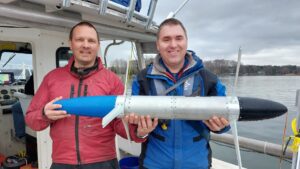
Ocean currents are a potentially reliable source of renewable energy, but the complications associated with deploying current energy conversion (CEC) devices in deep water make harvesting that energy a challenge. One promising approach is to use tethered axial-flow CECs composed of one or more pairs of coaxial counter- rotating turbines. However, a dual-rotor system moored in unsteady water by a flexible tether is likely to experience a condition, called skew, where the axis of rotation is not aligned with the direction of flow. A lab-scale turbine was constructed to investigate the effect of skew on fluid power conversion of a coaxial CEC. A semi-empirical model of the power conversion was developed for comparing the results to a recently published analytical model. It was found that the analytical model represents the data better than a simple ad hoc modification to previous models that is often used to estimate the power dynamics.
https://doi.org/10.1016/j.enconman.2021.113929
https://doi.org/10.2514/1.J057740
Supersonic cavity
Past Projects
Motorsports drafting
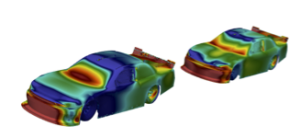

The use of passive ducting from the vehicle nose out of the front wheel opening was studied as a method of modifying the wake profile of a NASCAR Xfinity Series race vehicle to influence its effect on the drag of a trailing vehicle. Utilizing a fixed inlet area due to geometric constraints, exit angle, height and exit/inlet area ratio were explored using multi-vehicle Computational Fluid Dynamics (CFD) simulations and wind tunnel validation. Results indicate that appropriately positioned ducts reduce trailing car drag throughout the range of vehicle spacing studied; most significantly, it reduces the drag peak for the trailing car at approximately 1/4 to 1/2 car length spacing.
https://doi.org/10.1016/j.jweia.2019.03.001
Formula 1 dynamic front wing unsteady aerodynamics

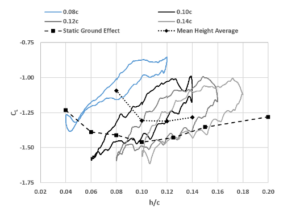

An inverted single element was subjected to a sinusoidal heaving motion in both free flight and extreme ground effect, with the ground-effect simulations oscillating in various states of interaction with the peak lift ride height of the wing. Peak negative lift during the heaving cycle was greater than the static values at the same ground clearances, time, and ensemble averaging showed an overall reduction in the lift coefficient of 10–22%. An analytical model combining potential flow lift predictions and a new variation of the Goman–Khrabrov state-space model predicts the lift behavior of the wing-in-ground effect based on reduced frequency and ground clearance.
https://doi.org/10.1115/1.4047804
Store separation
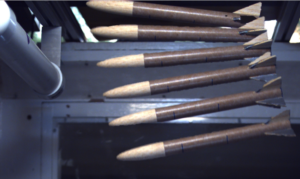
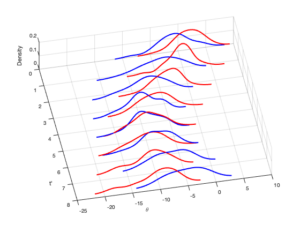
Store separation of a generic, thin-finned, missile through a continuously oscillating shear layer into subsonic flow was conducted experimentally through 100 drop tests to identify potential groups of trajectories and statistical phenomena. Change in store pitch was observed using a high-speed camera. Trajectories were grouped using machine learning with a k-means clustering, followed by a Gaussian mixture model clustering approach. The k-means clustering revealed two primary groups and one outlier group. The statistical strength of the primary groups was confirmed with the Gaussian mixture model, which places 89% of trajectories into one of two groups. The existence of two primary groups is strong evidence of a bifurcation.
https://doi.org/10.2514/1.C036261
